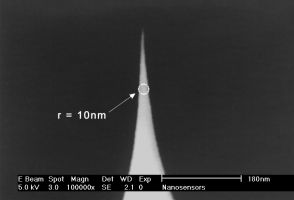Andreea Mariana Negrescu, Iuliana Ionascu, Madalina Georgiana Necula, Niculae Tudor, Maksim Kamaleev, Otilia Zarnescu, Anca Mazare, Patrik Schmuki and Anisoara Cimpean
Lateral Spacing of TiO2 Nanotube Coatings Modulates In Vivo Early New Bone Formation
Biomimetics 2025, 10(2), 81
DOI: https://doi.org/10.3390/biomimetics10020081
Xinyuan Fan, Yiming Tang, Jiahao Zhang, Kang Ma, Zhengyu Xu, Yuying Liu, Bin Xue, Yi Cao, Deqing Mei, Wei Wang, Guanghong Wei and Kai Tao
Gaseous Synergistic Self-Assembly and Arraying to Develop Bio-Organic Photocapacitors for Neural Photostimulation
Advanced Science, Early View Online Version of Record before inclusion in an issue, 2410471
DOI: https://doi.org/10.1002/advs.202410471
Pauline Kolar-Hofer, Giulia Zampini, Christian Georg Derntl, Enrica Soprano, Ester Polo, Pablo del Pino, Nurgul Kereyeva, Moritz Eggeling, Leoni Breth, Michael J. Haslinger, Michael Mühlberger, Peter Ertl, Astrit Shoshi, Julian Hartbaum, Michael Jurisch, Beatriz Pelaz, and Stefan Schrittwieser
Fabrication of nanoparticles with precisely controllable plasmonic properties as tools for biomedical applications
Nanoscale, 2025, 17, 4423-4438
DOI: https://doi.org/10.1039/D4NR02677B
Chowon Kim, Nayeon Kang, Sunhong Min, Ramar Thangam, Sungkyu Lee, Hyunsik Hong, Kanghyeon Kim, Seong Yeol Kim, Dahee Kim, Hyunji Rha, Kyong-Ryol Tag, Hyun-Jeong Lee, Nem Singh, Daun Jeong, Jangsun Hwang, Yuri Kim, Sangwoo Park, Hyesung Lee, Taeeon Kim, Sang Wook Son, Steve Park, Solmaz Karamikamkar, Yangzhi Zhu, Alireza Hassani Najafabadi, Zhiqin Chu, Wujin Sun, Pengchao Zhao, Kunyu Zhang, Liming Bian, Hyun-Cheol Song, Sung-Gyu Park, Jong Seung Kim, Sang-Yup Lee, Jae-Pyoung Ahn, Hong-Kyu Kim, Yu Shrike Zhang and Heemin Kang
Modularity-based mathematical modeling of ligand inter-nanocluster connectivity for unraveling reversible stem cell regulation
Nature Communications volume 15, Article number: 10665 (2024)
DOI: https://doi.org/10.1038/s41467-024-54557-8
Qijiang Shu, Pengru Huang, Fuhua Yang, Linjing Yang and Lei Chen
Study on crystal growth of Ge/Si quantum dots at different Ge deposition by using magnetron sputtering technique
Scientific Reports volume 13, Article number: 7511 (2023)
DOI: https://doi.org/10.1038/s41598-023-34284-8
Qijiang Shu, Pengru Huang, Xicheng Zhang, Linjing Yang, Donghai Ye, Li Yang, Hongxing Liu and Lei Chen
Morphology and structure evolution of multilayered Ge/Si quantum dots grown by magnetron sputtering
Micro & Nano Letters, Volume 18, Issue 2, February 2023, e12158
DOI: https://doi.org/10.1049/mna2.12158
Dennis K. Galanakis, Anna Protopopova, Kao Li, Yingjie Yu, Tahmeena Ahmed, Lisa Senzel, Ryan Heslin, Mohamed Gouda, Jaseung Koo, John Weisel, Marilyn Manco-Johnson and Miriam Rafailovich
Novel characteristics of soluble fibrin: hypercoagulability and acceleration of blood sedimentation rate mediated by its generation of erythrocyte-linked fibers
Cell and Tissue Research (2022)
DOI: https://doi.org/10.1007/s00441-022-03599-9
Dennis K. Galanakis, Anna Protopopova, Liudi Zhang, Kao Li, Clement Marmorat, Tomas Scheiner, Jaseung Koo, Anne G. Savitt, Miriam Rafailovich and John Weisel
Fibers Generated by Plasma Des-AA Fibrin Monomers and Protofibril/Fibrinogen Clusters Bind Platelets: Clinical and Nonclinical Implications
TH Open 2021; 05(03): e273-e285
DOI: 10.1055/s-0041-1725976
Jiang Yang, Tai Wang, Lina Zhao, Vinagolu K. Rajasekhar, Suhasini Joshi, Chrysafis Andreou, Suchetan Pal, Hsiao-ting Hsu, Hanwen Zhang, Ivan J. Cohen, Ruimin Huang, Ronald C. Hendrickson, Matthew M. Miele, Wenbo Pei, Matthew B. Brendel, John H. Healey, Gabriela Chiosis, and Moritz F. Kircher
Gold/alpha-lactalbumin nanoprobes for the imaging and treatment of breast cancer
Nature Biomedical Engineering 4, pages 686–703 (2020)
DOI: https://doi.org/10.1038/s41551-020-0584-z
Anna D. Protopopova, Andrea Ramirez, Dmitry V. Klinov, Rustem I. Litvinov, John W. Weisel
Factor XIII topology: organization of B subunits and changes with activation studied with single-molecule atomic force microscopy
Journal of Thrombosis and Haemostasis, Volume 17, Issue 5, May 2019, Pages 737-748
DOI: https://doi.org/10.1111/jth.14412
Santu Bera, Sudipta Mondal, Bin Xue, Linda J. W. Shimon, Yi Cao and Ehud Gazit
Rigid helical-like assemblies from a self-aggregating tripeptide
Nature Materials volume 18, pages 503–509 (2019)
DOI: https://doi.org/10.1038/s41563-019-0343-2
Chao Liang, Zonghuang Ye, Bin Xue, Ling Zeng, Wenjian Wu, Chao Zhong, Yi Cao*, Biru Hu*, and Phillip B Messersmith
Self-Assembled Nanofibers for Strong Underwater Adhesion: The Trick of Barnacles
ACS Applied Materials and Interfaces 2018, 10, 30, 25017–25025
DOI: https://doi.org/10.1021/acsami.8b04752
Anna D. Protopopova, Rustem I. Litvinov, Dennis K. Galanakis, Chandrasekaran Nagaswami, Nikolay A. Barinov, Alexander R. Mukhitov, Dmitry V. Klinov and John W. Weisela
Morphometric characterization of fibrinogen’s αC regions and their role in fibrin self-assembly and molecular organization
Nanoscale. 2017 Sep 21; 9(36): 13707–13716.
DOI: 10.1039/c7nr04413e
Artem Zhmurov, Anna D.Protopopova, Rustem I. Litvinov, Pavel Zhukov, Alexander R.Mukhitov, John W. Weisel, Valeri Barsegov
Structural Basis of Interfacial Flexibility in Fibrin Oligomers
Structure, Volume 24, Issue 11, 1 November 2016, Pages 1907-1917
DOI: https://doi.org/10.1016/j.str.2016.08.009
Annalisa Calò, Aitziber Eleta-Lopez, Pablo Stoliar, David De Sancho, Sergio Santos, Albert Verdaguer and Alexander M. Bittner
Multifrequency Force Microscopy of Helical Protein Assembly on a Virus
Nature Scientific Reports volume 6, Article number: 21899 (2016)
DOI: https://doi.org/10.1038/srep21899






 Due to their unique geometry the tips of the are more susceptible to tip damage by electrostatic discharge (ESD) than other Silicon-SPM-Probes.
Due to their unique geometry the tips of the are more susceptible to tip damage by electrostatic discharge (ESD) than other Silicon-SPM-Probes.
